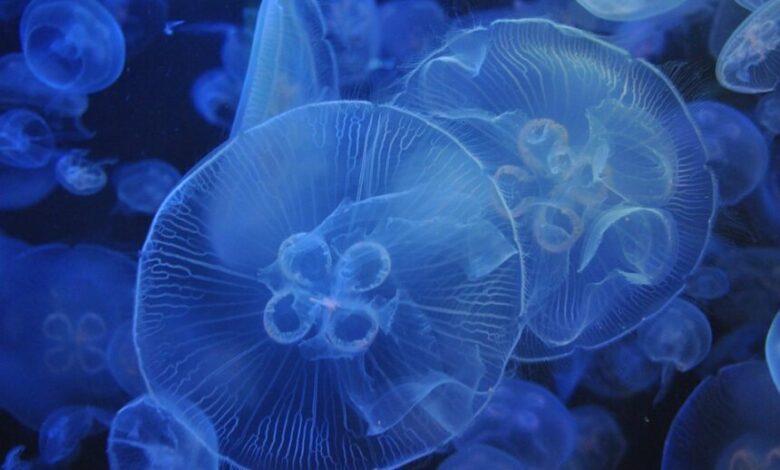Peiscans: What Are They and Why They Matter

Peiscans might sound like a strange word, but it’s actually a fun topic to learn about. Peiscans are a special type of animal or plant that is very interesting to study. They come in different shapes and sizes, and they can be found in various places around the world.
In this blog, we will explore what peiscans are, where they live, and why they are important. Whether you’re curious about nature or just love learning new things, understanding peiscans can be a great adventure!
What Are Peiscans?
Peiscans are interesting creatures that might sound new to you. They are special animals or plants that can be found in many places. When you hear the word “peiscans,” think of them as unique parts of nature that help keep our world balanced. These creatures come in different shapes and sizes, making them fascinating to learn about.
In nature, peiscans play an important role. They can be part of the food chain or help in various ecosystems. For example, some peiscans might help pollinate flowers or provide food for other animals. Understanding what they are helps us appreciate the variety of life around us.
Learning about peiscans can be fun and educational. They might be small or large, but each one has its own place in nature. By studying these creatures, we can learn more about the world and how everything is connected.
The Different Types of Peiscans
Peiscans come in many different types, each with its own special traits. Some peiscans might be tiny and live in the soil, while others could be larger and live in forests or oceans. Each type has unique features that help it survive in its environment.
For example, one type of peiscans might have bright colors to scare away predators, while another might use camouflage to hide. These different types show how diverse and adaptable nature can be. Each peiscan has its way of fitting into its habitat.
Exploring the different types of peiscans can be exciting. You might find that some are common in your area, while others are rare and found only in specific places. Learning about these varieties helps us understand the rich tapestry of life on Earth.
Where Can You Find Peiscans?
Peiscans can be found in many places around the world. Some live in forests, while others might be found in deserts or even in your own backyard. They are quite adaptable and can thrive in different environments.
If you look closely, you might spot peiscans in places you visit. For example, a peiscan might be living in a pond, hiding under a rock, or even growing in the garden. Each location provides the right conditions for different peiscans to live and grow.
Knowing where to find peiscans can make exploring nature more fun. Whether you’re on a hike or just in your neighborhood, keep an eye out for these fascinating creatures. You never know where you might see one!
How Peiscans Help the Environment
Peiscans play a big role in keeping our environment healthy. They might help by cleaning the soil, pollinating plants, or providing food for other animals. Their presence is important for maintaining the balance in nature.
One way peiscans help is by breaking down organic matter in the soil. This process helps recycle nutrients, making the soil richer for plants to grow. Some peiscans also help spread seeds, which helps plants grow in new areas.
By supporting peiscans and their habitats, we help keep our environment in good shape. They are a crucial part of many ecosystems and contribute to the health of our planet. Learning about how they help can inspire us to take better care of nature.
Fun Facts About Peiscans
Peiscans have some really cool and fun facts that you might find surprising. For example, did you know that some peiscans can change colors to blend in with their surroundings? This special ability helps them avoid predators and find food.
Another fun fact is that some peiscans have unique ways of communicating. They might make sounds, use colors, or even dance to send messages to others. These behaviors are part of what makes peiscans so interesting to study.
Learning these fun facts can make you more curious about peiscans. They are not just ordinary creatures but have special features and behaviors that make them unique. Discovering these facts can make studying nature even more enjoyable.
Peiscans in Your Backyard: What to Look For
You might be surprised to find peiscans right in your own backyard. They can be small and easy to overlook, but they are there if you know where to look. Keep an eye out for these fascinating creatures in your garden or local park.
Look for peiscans near plants, under rocks, or around water sources. They might be hiding or moving quietly, so you may need to look closely. Sometimes, you might even spot their tracks or signs that they are nearby.
Exploring your backyard for peiscans can be a fun adventure. It’s a great way to connect with nature and learn about the wildlife around you. Plus, it’s exciting to discover new things just outside your door!
How Peiscans Are Studied
Studying peiscans involves observing them in their natural habitats. Scientists and nature enthusiasts use various tools and methods to learn more about these creatures. By studying them, we can understand how they live and interact with their environment.
Researchers might use binoculars, cameras, or even take samples to study peiscans. They look at their behavior, diet, and how they fit into the ecosystem. This information helps us learn more about their role in nature and how to protect them.
Studying peiscans is important for conservation efforts. By understanding them better, we can help ensure their habitats remain safe and healthy. It’s a way to make sure future generations can also enjoy and learn from these amazing creatures.
The Role of Peiscans in Nature
Peiscans have an important role in maintaining the balance of nature. They might help with things like pollination, seed dispersal, or even controlling pests. Each peiscan has a unique job that supports the ecosystem.
For instance, some peiscans might help plants grow by spreading their seeds. Others might be prey for larger animals, creating a food chain that keeps the environment balanced. Their roles are all connected and contribute to a healthy ecosystem.
Understanding the role of peiscans helps us see why every creature is important. Even the smallest peiscans can have a big impact on their environment. By appreciating their roles, we can better protect and support nature.
Peiscans vs. Other Animals: What’s the Difference?
Comparing peiscans to other animals can help us see what makes them special. While they might share some traits with other creatures, peiscans often have unique features or behaviors. These differences are what make them interesting to study.
For example, peiscans might have different ways of finding food or protecting themselves. Some might use camouflage, while others use bright colors to warn predators. These unique traits set them apart from other animals in their habitats.
Learning about these differences can deepen our understanding of nature. It shows us how diverse and adaptable life can be. By comparing with other animals, we gain insight into the incredible variety of life on Earth.
How to Identify…
Identifying peiscans involves looking for specific features that make them stand out. You might notice their size, color, or markings that help you recognize them. Each peiscan has its own unique characteristics.
To identify them, start by observing their environment. Look for clues like their favorite hiding spots or the type of food they eat. Knowing these details can help you spot them more easily.
Identifying can be a fun challenge. It helps you learn more about them and their habits. Plus, it’s exciting to discover new creatures and learn what makes them unique.
Why Peiscans Are Important for Biodiversity
Peiscans are vital for maintaining biodiversity in nature. They contribute to the variety of life by supporting ecosystems and interacting with other species. Their presence helps create a balanced and healthy environment.
Each peiscan plays a role in its ecosystem, whether by pollinating plants, providing food for other animals, or helping with decomposition. These interactions support the overall health of the environment and help different species thrive.
Protecting and their habitats is crucial for biodiversity. By ensuring they have safe places to live, we help preserve the richness of life on Earth. It’s a way to support the web of life that includes all creatures, big and small.
Protecting Peiscans and Their Habitats
Protecting peiscans and their habitats is essential for keeping our environment healthy. We can help by reducing pollution, conserving natural areas, and supporting conservation efforts. These actions ensure that they have safe places to live and thrive.
Simple steps like recycling, planting trees, and keeping waterways clean can make a big difference. By taking care of the environment, we help protect the habitats that they need to survive. Every small action counts in preserving nature.
Getting involved in local conservation projects can also help protect them. By working together with others, we can make sure that these amazing creatures continue to be part of our world. It’s a way to give back to nature and support its health.
Different Environments
They can live in many types of environments, each offering its own set of conditions. Whether it’s a forest, desert, or aquatic area, these creatures have adapted to thrive in their surroundings. Each environment provides unique challenges and resources for them.
In forests, might find plenty of food and shelter among the trees. In deserts, they have to cope with extreme temperatures and limited water. Aquatic peiscans, like those in ponds or rivers, are adapted to live in water and may have special features to help them swim and find food.
By exploring different environments, we can learn how adapt to their surroundings. Understanding these adaptations helps us appreciate the diversity of life and the ways creatures survive in various habitats.
How Peiscans Communicate
They have interesting ways of communicating with each other. They might use sounds, colors, or movements to send messages. Each peiscan species has its unique methods of communication that help them interact with others.
Some peiscans make noises to attract mates or warn others of danger. Others might change color or perform specific actions to communicate. These methods are important for their survival and help maintain social bonds within their groups.
Learning about how they communicate can be fascinating. It shows us how animals and plants use different strategies to interact with their environment and each other. By observing these behaviors, we gain insights into the complexity of nature.
Peiscans and Their Diet
Peiscans have various diets depending on their species and environment. Some are herbivores, eating plants and leaves, while others might be carnivores, eating insects or smaller animals. Their diet affects their behavior and how they interact with their surroundings.
For instance, a peiscan that eats plants might spend a lot of time foraging for food in its habitat. On the other hand, a peiscan that eats insects might need to be quick and agile to catch its prey. Each diet requires different skills and adaptations.
Understanding what they eat helps us learn more about their role in the ecosystem. It also highlights the connections between different species and their environment. By studying their diet, we can appreciate the diversity of life and the balance of nature.
The Life Cycle
The life cycle of peiscans is an amazing journey from birth to adulthood. Each stage in their life cycle has its own set of changes and challenges. Learning about these stages helps us understand how grow and develop.
It usually start as eggs or young animals and go through various stages as they grow. They might have different appearances and behaviors at each stage. For example, young might look different from adults or have different needs for survival.
Exploring the life cycle provides insights into their development and survival strategies. It also shows how they fit into the larger web of life. Understanding these stages helps us appreciate the complexity and beauty of nature.
Peiscans and Their Predators
Have to deal with predators in their natural habitats. Predators are animals or creatures that hunt other animals for food. These have developed various strategies to protect themselves from these dangers.
Some peiscans use camouflage to blend in with their surroundings, making it harder for predators to spot them. Others might have defensive features, like sharp spines or bad-tasting chemicals, to keep predators away. These adaptations help them survive in the wild.
Studying how protect themselves from predators helps us understand their survival tactics. It also highlights the challenges they face in their environment. By learning about these interactions, we gain a better appreciation for the balance of nature.
Peiscans in Myth and Culture
Peiscans have appeared in various myths and cultures throughout history. Different societies have seen them as symbols or characters in their stories. These cultural references show how people have viewed over time.
In some cultures, Might be seen as symbols of wisdom or strength. In others, they might be featured in legends or folktales. These cultural stories often reflect the values and beliefs of the people who created them.
Exploring how appear in myths and culture provides a glimpse into human history and imagination. It shows how people have connected with nature and incorporated it into their lives. Understanding these connections adds depth to our knowledge.
Conservation Efforts
Conserving peiscans and their habitats is crucial for their survival. Many organizations and individuals work to protect these creatures from threats like habitat loss and pollution. Conservation efforts help ensure that continue to thrive.
Efforts might include creating protected areas, reducing pollution, and raising awareness about the importance. By supporting these initiatives, we help maintain the balance of ecosystems and preserve the diversity of life.
Getting involved in conservation efforts can make a difference. Simple actions, like supporting wildlife organizations or participating in clean-up events, contribute to protecting. Together, we can help ensure a healthy environment for these fascinating creatures.
How Adapt to Climate Change
Climate change affects many aspects of the environment, including the lives of peiscans. These creatures have to adapt to changing temperatures, weather patterns, and other environmental factors. Their ability to adjust is vital for their survival.
It’s might change their behavior, migration patterns, or even physical traits to cope with new conditions. For example, they might shift their range to find suitable habitats or alter their diet based on available resources. These adaptations help them manage the effects of climate change.
Studying how adapt to climate change helps us understand the broader impacts on ecosystems. It also highlights the need for ongoing conservation efforts to support these creatures. By learning about their adaptations, we can better appreciate their resilience and the challenges they face.
Peiscans in Scientific Research
Scientific research on peiscans provides valuable information about their biology and ecology. Researchers use various methods to study these creatures, including field observations, experiments, and data analysis. This research helps us learn more about their role in the environment.
Through scientific studies, we can understand how interact with their surroundings, their life cycles, and their behaviors. This knowledge is crucial for developing conservation strategies and ensuring their survival. Research also contributes to our general understanding of biodiversity.
Supporting scientific research on benefits both the creatures and the environment. It helps us make informed decisions about conservation and management. By learning from research, we can better protect these fascinating creatures and their habitats.
Peiscans and Their Role in Ecosystems
Peiscans play a crucial role in maintaining the balance of ecosystems. They interact with other species and contribute to various ecological processes. Understanding their role helps us appreciate the complexity of nature.
In ecosystems,Might help with processes like pollination, seed dispersal, or decomposition. Their activities support the health of their environment and influence the survival of other species. By performing these roles, It’s help keep ecosystems functioning smoothly.
Recognizing the role of these in ecosystems highlights their importance in maintaining ecological balance. It also emphasizes the interconnectedness of all living things. Understanding these roles helps us appreciate the intricate web of life and the need to protect it.
Conclusion
Peiscans are amazing and important parts of our world. From the forests to your backyard, they play many roles that help keep nature balanced. Whether they are hiding, eating, or communicating, Add to the rich variety of life around us. Learning about them helps us understand more about how nature works and why every creature is important.
Protecting and their homes is something we can all do. Simple actions like keeping the environment clean and supporting wildlife efforts can make a big difference. By caring for this, we help keep our planet healthy and full of life. So next time you see one, remember how special they are and how they help our world stay wonderful!



